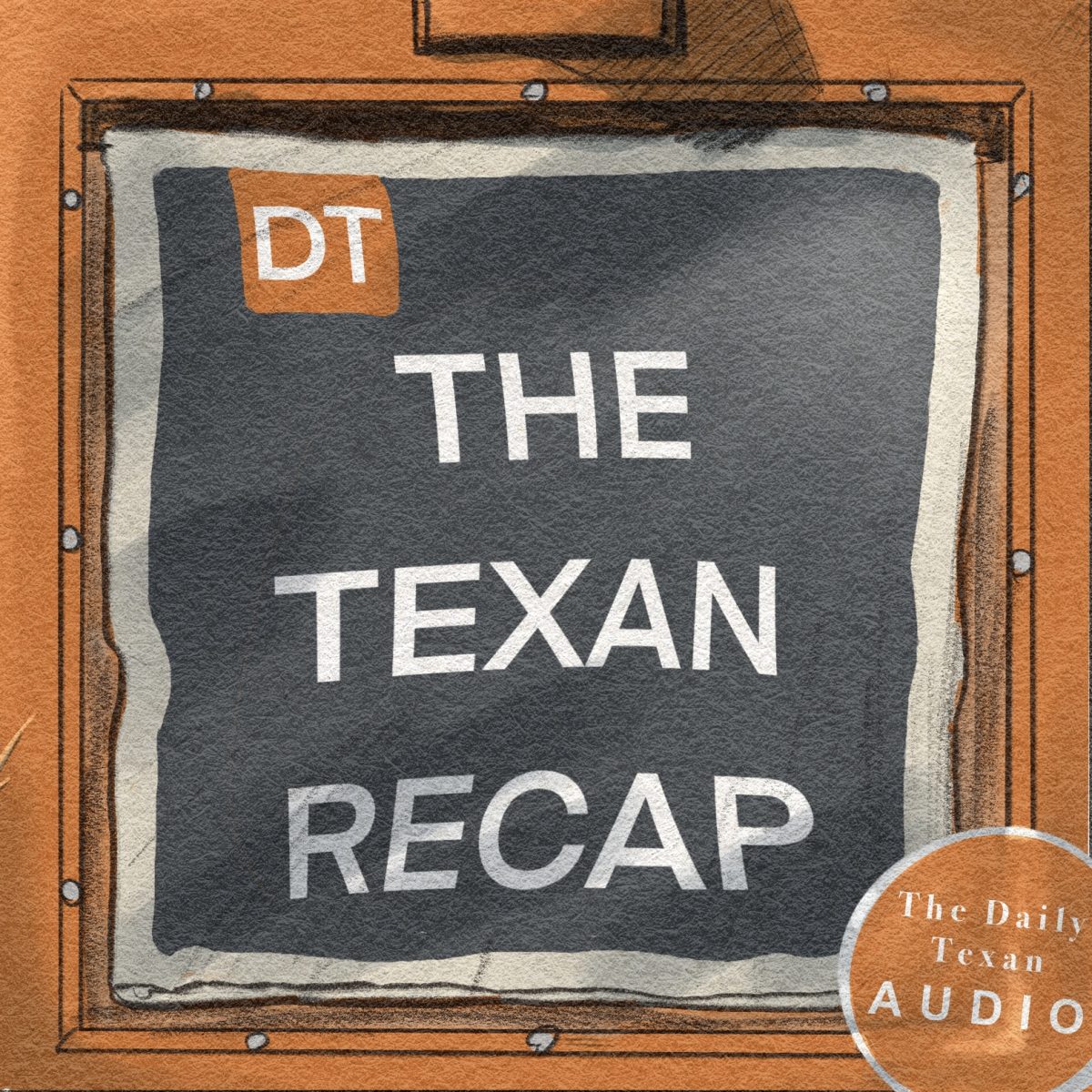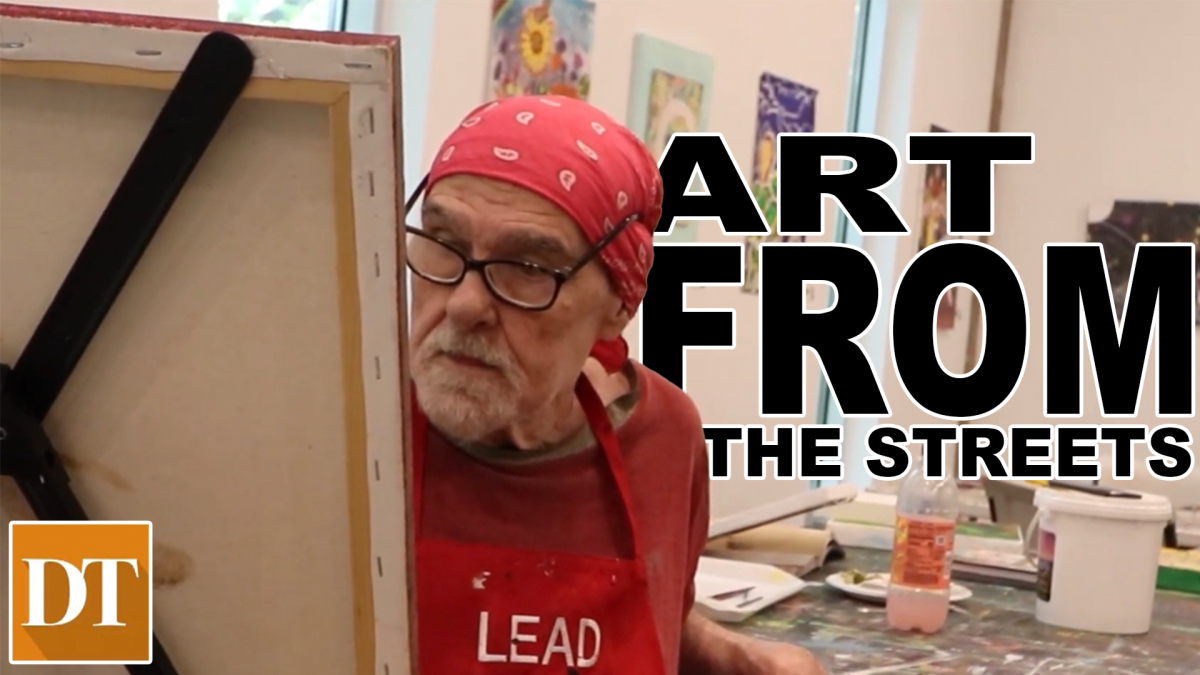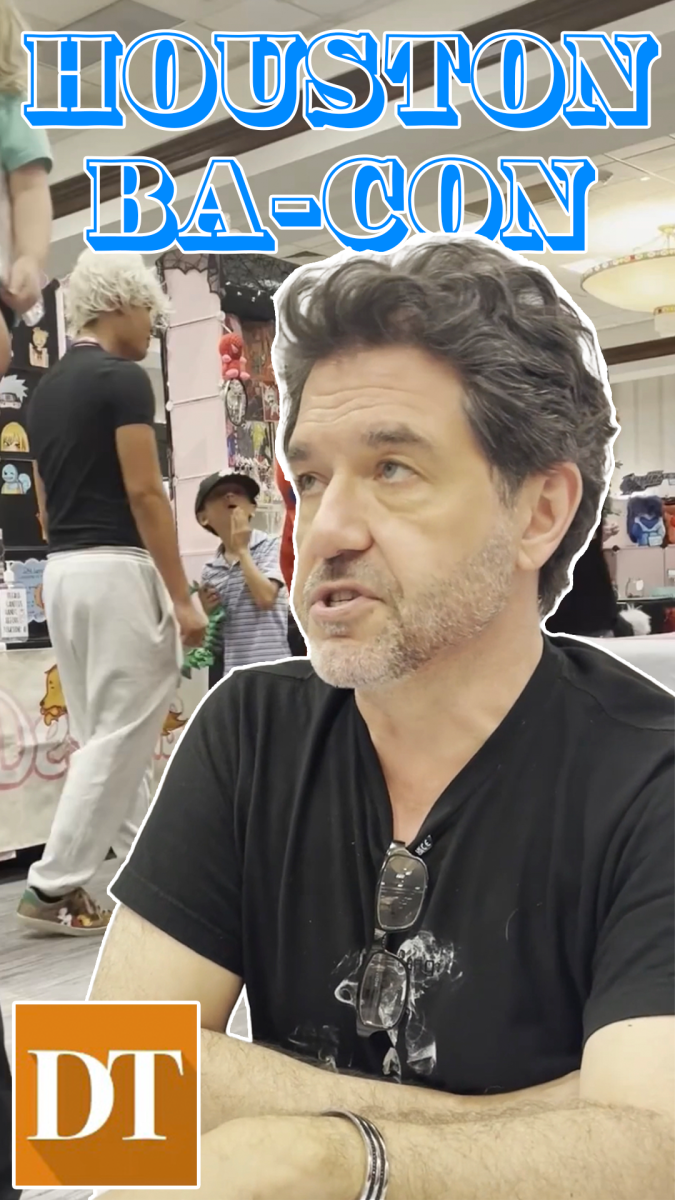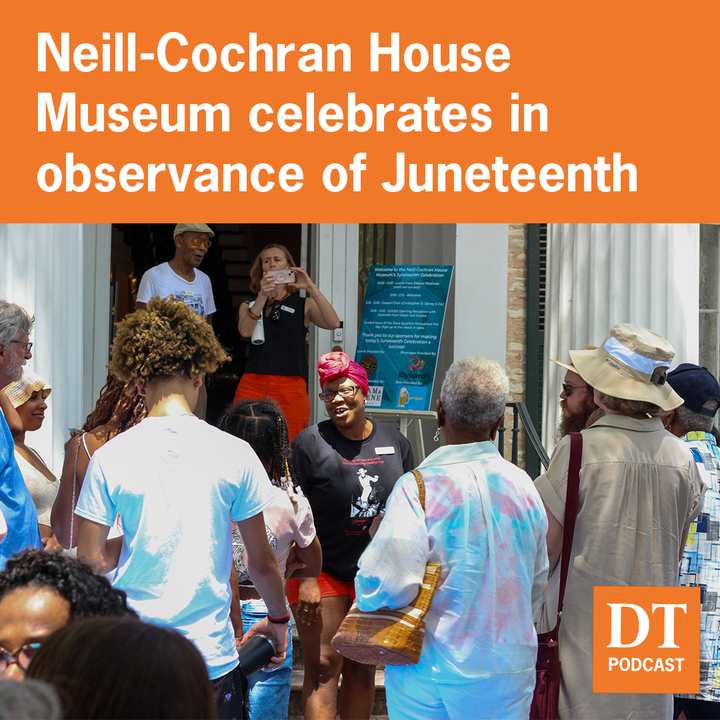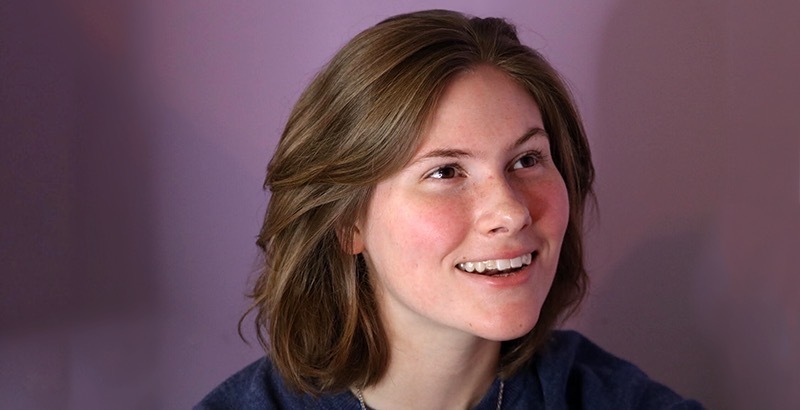Editor’s note: This podcast was originally published on Spotify on Dec. 5, 2023.
Anyone who wants to eat healthy or understand where their food comes from must first navigate an ever-growing sea of buzzwords. In this episode, Audio Producer Patrick M. Davis explores regenerative agriculture to see what the phrase means past an advertisement. Hear from a food systems expert, a chicken farmer and from UT’s very own microfarm.
Reported by Patrick M. Davis. Cover art by Emma Berke. Music is “Kilkerrin” by Blue Dot Sessions.
*upbeat guitar music*
Patrick M. Davis: Anyone who wants to eat healthy or understand where their food comes from must first navigate an ever-growing sea of buzzwords. Huge food corporations and local farmers alike market their products with words like organic, sustainable, all-natural, free-range, pasture-raised, grass-fed, functional, superfood, anti-inflammatory– you get the idea. All of these terms have competing definitions which adds to the confusion.
Although it’s been around since the 1980s, the term “regenerative agriculture” has recently become one of those buzzwords. The Sustainable Agriculture Initiative, or SAI, released a definition of regenerative ag in September. Among the SAI’s members are companies like PepsiCo, Nestle and Unilever.
The SAI defines regenerative agriculture as “an outcome-based farming approach that protects and improves soil health, biodiversity, climate and water resources while supporting farming business development.” That sounds like a good approach, but some worry about the track records of the companies pushing this definition.
Dr. Raj Patel: I think what they’re trying to do is sort of circumvent what the definition is going to be so that they’re not called upon to think about things like labor, or to think about paying workers along the food chain well in a way that that restores land and is regenerative of them. The ideas normally associated with regenerative are precisely ideas about, you know, being bound to understanding long-term cycles of life. But that’s not really the MO of PepsiCo, for example, or Diageo or Syngenta. So instead, what they’ve got is a very minimal definition of let’s not try and annihilate everything.
Patrick: That’s Doctor Raj Patel. He’s a research professor at UT’s LBJ School of Public Affairs who’s written extensively about world food systems.
While most modern agriculture practices only extract nutrients from the soil, regenerative agriculture actually improves soil quality.
Dr. Patel: In order not to annihilate the land, then what we have to do is make sure that the soil is healthy, that there’s a range of biodiversity on the land, and that the way that we grow food is consonant with actually driving nutrients into the land rather than extracting them on balance. But there are different ways of arriving at that outcome.
Patrick: Dr. Patel told me that the focus on outcome, and not technique, can lead to some problematic solutions, especially from Big Ag corporations. Some of those corporations, like Bayer and Syngenta, are interested in using genetically modified soil, soil microbes, fungi and bacteria to maintain soil quality. Of course, those things would all become patented, highly profitable products. This model of regenerative agriculture fits neatly into industrialized agriculture systems that focus more on profits than people or the environment. Alternatively, what Patel calls “high-road” regenerative ag, constantly maintains soil quality by mimicking more natural processes.
Dr. Patel: High-road regenerative agriculture is also about making sure that there’s a lot of polyculture happening on the land. Polyculture means growing lots of different crops at the same time so that you can have lots of biodiversity on the land.
*chicks chirping*
Patrick: But in South Austin, a farmer has seen an increase in biodiversity not from soil amendments or polyculture. Ryan Gould of Geosmin Regenerative is increasing his soil quality by the way he raises his chickens.
Ryan Gould: In order to get forage, you’ve got to kind of mimic what nature would have had, which is not fences, but flocks.
Patrick: Ryan told me that even free-range chickens can be bad for soil because they tend to hang out near the feeders and oversaturate those areas with manure. Ryan uses mobile enclosures for his chickens. He moves the enclosures to fresh grass every day and doesn’t return to the same spot for several months, similar to how wild flocks of birds land in different places to feed every day. Ryan started raising chickens in 2021 and pretty quickly noticed differences in the grass where the chickens had been.
Ryan: Every time I walked through this part, doves would fly up in the morning. And I realized they’re not flying up from anywhere else. Why was that? I looked down at my feet and it’s filled with slugs and snails and bugs. Why is that? The microbiology from the poop. So the poop acts like compost on the surface of the soil. So you’re like injecting biology into the situation.
Patrick: In addition to soil health, Ryan’s birds are far healthier than typical chickens that are raised for meat. Chickens that live healthier lives, pass significant benefits on to the people who eat them.
Ryan: When you raise them in confinement, and don’t give them what they need and have to like IV them antibiotics, they are unhealthy. But when you raise them in the natural environment on grass, they thrive. And the product is totally different. I mean, the nutrient density is completely different. The taste is completely different. Omega threes are higher, the fats are healthier, it’s like the whole thing changes when it’s raised the right way.
Patrick: Ryan acknowledges that his chickens cost more for consumers to buy, but he says cheap food comes with its own hidden costs– things like poor soil quality which contributes to erosion and climate change, and poor physical health for people who consume that food, leading to more chronic disease and overstressed healthcare systems.
Ryan: There really is a hidden cost to the way we buy food. It may be cheap as hell to buy a chicken for $3 a pound at the store, but you are paying a huge cost in like the health of your society down the line. We are all dying because of the chicken being so cheap.
Patrick: But this is not a problem that can be fixed just by choosing the farmer’s market over the grocery store. For a lot of people, food that is ethically produced and environmentally friendly is financially out of reach. It’s an issue that’s more systemic than individual. In fact, most people would buy healthy, sustainable food if they had the choice. Here’s Dr. Patel again.
Dr. Patel: And so the way to get to more sustainable agriculture and better eating habits, is to give people the autonomy to be able to make the choice. And mostly that autonomy is associated with higher levels of income… when we did this fantastic study about hunger in Austin, everyone we interviewed wanted to eat healthy… And then there was also a very certain understanding from people who wanted to eat better food that they desperately wanted to, but they didn’t have enough money. And all they needed was the money. And they would make the right choice.
Patrick: Such systemic issues can seem impossible to tackle, especially given the influence of huge food and ag corporations. But both Dr Raj Patel and Ryan Gould stressed the importance of individual and community action when it comes to changing our broken food systems.
The Campus Environmental Center gives UT students an opportunity to join such a community with its student-led Microfarm. The Microfarm donates all of the produce it grows to the UT Outpost foodbank. That means the Microfarm’s nutrient-dense veggies are available to anyone, regardless of income. While the Microfarm is not fully regenerative, many of its practices align with a similar approach called agroecology.
Hillary Xiu: All farming used to be agroecology — like you farmed based on the geographical region you lived in, the geological region you lived in, your weather patterns and the plants that were present there. Over time as agriculture has industrialized, you’ve lost the diversity in agriculture, and a lot of it has become like homogenous.
Patrick: That’s one of the farm’s co-leads, Hillary Xiu. She’s a second-year biology and environmental science double major. Hillary encourages students to get involved with the Microfarm even if they have no experience with farming or gardening.
Hillary: This is for a lot of people their first time, like interacting with nature on this scale, planting plants or like weeding grass, or even being able to tell like, which caterpillar will turn into what.
Patrick: In fact, she thinks that lack of experience can be an advantage.
Hillary: Part of what makes the farm unique is that we don’t really know what we’re doing. And that makes us uniquely flexible. We’re students, we don’t have generations of farming knowledge behind us. So we’re very flexible in the sense that we will try out anything.
Patrick: Some of the things the Microfarm has tried out are circular farming practices. Hillary’s co-lead, Morgan Heard, told me that all of the weeds and brush that are pulled from the farm are used to make compost. That compost is then used for fertilizer at the Microfarm. In addition to giving out food, the UT Outpost also collects food scraps that are added to the compost. Morgan is a third-year nutritional science student. Like Dr. Raj Patel and Ryan Gould, Morgan understands the necessity of community when it comes to changing unhealthy food systems.
Morgan Heard: Our food system in the United States is very, very broken. I’ve learned a lot about it through like my nutrition classes and like my community nutrition classes, and we talk a lot about community being a big factor. I fully believe people need to have a better connection from the whole farm-to-table understanding where their food comes from…And we have to have a community that fosters that. We’re thankful we really do have like a great community here with like our team members, a lot of the returning volunteers, and even like Hillary and I with like our fellow staff.
*microfarm ambiance*
Patrick: If you’d like to learn more about UT’s Microfarm, you can follow the farm on Instagram @utmicrofarm.
*upbeat guitar music*
Patrick This episode was a production of The Daily Texan Audio Department. It was hosted and produced by me, Patrick M. Davis. If you liked this episode, make sure you subscribe to The Daily Texan Podcasts on your streaming platform of choice and follow us on Twitter @texanaudio. Cover art is by Emma Berke. Music is Kilkerrin by Blue Dot Sessions. Thanks for listening!



